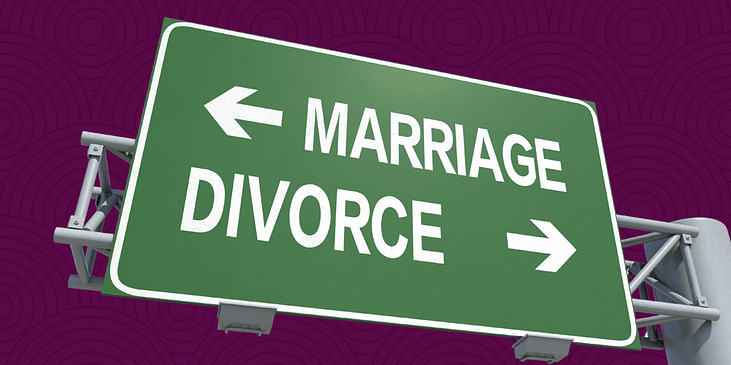By Sarah Kim
You’ve probably heard of marriage equality or marriage equity, likely in the context of LGBTQ+ rights. But there’s another kind of marriage inequity affecting people with disabilities: the disability marriage penalty. In this context, “marriage penalty” refers to a series of Social Security rules that trigger reduction or complete loss of disability benefits for otherwise qualified individuals when they get married.
The disability marriage penalty punishes people with disabilities in the U.S. who get married by stripping them of disability benefits such as Social Security benefits and Medicaid. The clause has remained a part of the benefits policy for years, affecting many thousands of people with disabilities. Consequently, marriage rates among Supplemental Security Income (SSI) recipients are half that of the general public.
SSI is a needs-based program that is based on an individual’s income and assets. The SSI program is for people with disabilities including children and older adults who have limited income and resources. State programs can supplement federal SSI benefits. When the individual gets married, joint income and assets are evaluated when determining whether a person is still eligible for the benefits.
Due to this marriage penalty, the system has made it so that many people with disabilities cannot get married or start a family. This stems from longstanding institutionalized ableism that actively prevents people with disabilities from living long, fulfilling lives. Some disability rights advocates trace the marriage penalty back to the eugenics and institutionalization movements, beginning in the 19th century and continuing in popularity through the 1940s. These entrenched policies of discrimination included forced sterilization of disabled people and segregated disabled individuals from interacting with nondisabled people in the belief that they were preventing disabilities from spreading to offspring.
Although practices like the marriage penalty aren’t as overtly ableist as practices of the past, they still keep people with disabilities from accessing the same caliber of life, liberty, and the pursuit of happiness that their nondisabled counterparts have.
Why People with Disabilities Forgo Marriage or Resort to Divorce
When deciding to offer disability benefits, the Social Security Administration assesses one’s income and assets. This can be a problem for married couples because they may be disqualified if their combined bank balance is greater than $3,000. Too often, these combined assets and incomes are too high to qualify for federal assistance. A common assumption is that a nondisabled partner would take care of their disabled spouse financially and medically, and that additional supports would not be necessary. This is not the case for many couples, and puts the disabled person at a disadvantage, leaving them completely dependent on their partner, which can also leave them more vulnerable to abuse, with no personal income to protect them.
For couples who both have disabilities, the impact is even greater. Married couples are allowed to have fewer assets than each party would have as individuals. After they marry, they’ll receive about 25 percent less in benefits than they did as two unmarried individuals. The assumption behind this is that the couple can live on less income together than as individuals.
However, many disability assistance programs — such as community-based services, home-care aides, and long-term care facilities — only accept Medicaid recipients. And the only way to qualify for Medicaid is to fall below certain income thresholds. This presents itself as a catch-22. Even if an individual can afford private health insurance, health care costs for people with disabilities are often much higher than for nondisabled people.
According to the U.S. Census, employees with disabilities earn on average 66 cents for every dollar earned by nondisabled peers, putting them at or below the poverty line. Paying for healthcare, housing, and the basic cost of living can be nearly impossible. So, for many individuals with disabilities, remaining unmarried is, unfortunately, their only way of survival.
Often, happily married individuals with disabilities resort to divorce simply to gain access to healthcare and benefits. In fact, according to OZY, between 2009 and 2019, nearly 1.1 million Americans with disabilities got divorced, compared to 593,000 who got married. Roughly twice as many people with disabilities got divorced than married.
However, even if an individual with a disability isn’t legally married, SSA can disqualify them for “holding out” as a married couple. If the federal agency finds out the individual is cohabitating with their partner and sharing living expenses, they can still lose their benefits, even if they’re not married.
What the SSI Restoration Act is and How it Can Help
Disability benefit regulations in the U.S. are outdated and inequitable. Most of the SSI eligibility rules have not been updated since President Nixon signed the Social Security Amendments into law in 1972. The amount of money recipients receive has also been stagnant, not accounting for inflation.
In June 2021, the Supplemental Security Income Restoration Act was introduced in the US House of Representatives by Representative Raul Grijalva (D-AZ), Representative Jan Schakowsky (D-IL), and Representative Elissa Slotkin (D-MI) and in the Senate by Senator Sherrod Brown (D-OH).
This bill would modernize SSI benefit programs and improve the lives of nearly 8 million people with disabilities and seniors.
The SSI Restoration Act would:
- Eliminate the disability marriage penalty by setting the SSI couple benefit rate to two times the individual rate,
- Increase the asset cap for individuals from $2,000 to $10,000 and for couples from $3,000 to $20,000,
- Increase the benefit rate to match the federal poverty line, adjust for inflation, and
- Allow people with disabilities to work and earn up to $416 per month without their SSI being reduced based on their income.
The time for updating SSI policies is long overdue, and this act has the potential to rectify a longstanding injustice. People with disabilities have been forced to choose between love and survival as a result of archaic policies. The bill has yet to be passed, but civilian engagement could tip the balance in its favor.
Related Links: WID Disability Benefits 101
Published: September 22, 2021

Sarah Kim is a Freelance Writer for WID.


0 comments on “Marriage Penalty Prevents Marriage Equity for People with Disabilities”